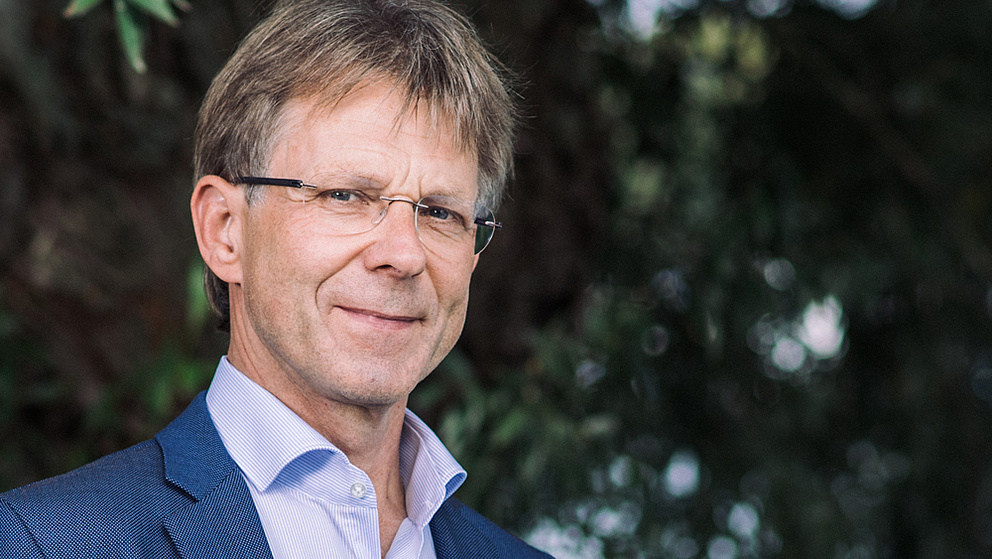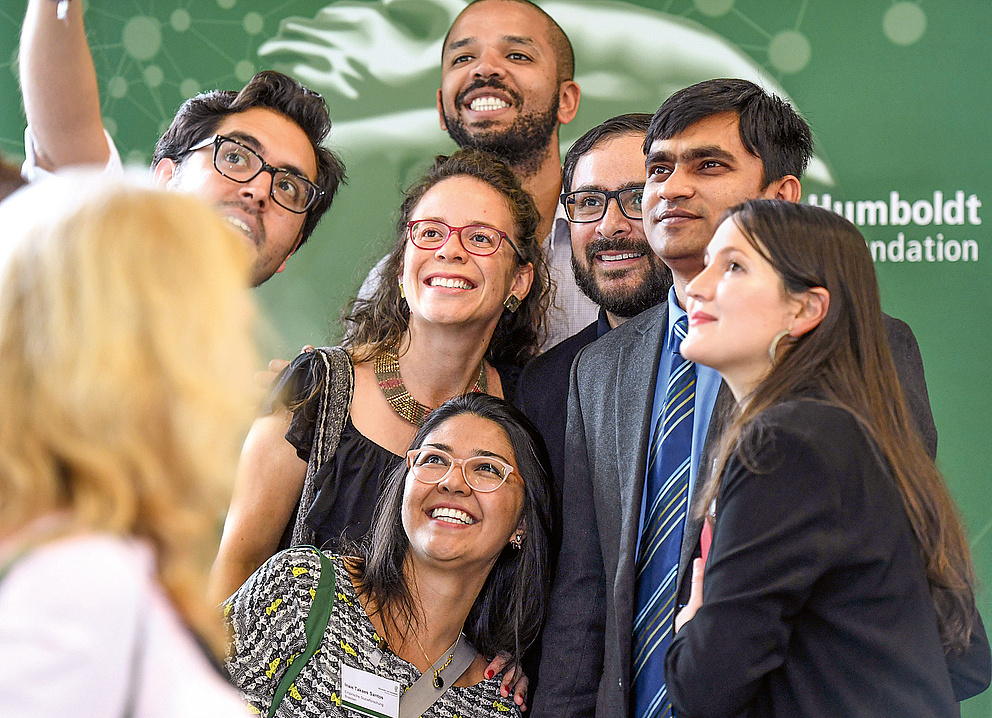Jump to the content
- {{#headlines}}
- {{title}} {{/headlines}}

KOSMOS: Mr Pape, diversity is a key component of the Foundation’s strategy. Why is the topic important to you?
HANS-CHRISTIAN PAPE: Diversity is a core characteristic of our academic network. It’s in our DNA. We sponsor researchers from more than 140 countries in this world, whether from the United States, India, Cameroon or Peru. We sponsor quantum physicists and sociologists, practitioners and theoreticians as well as people who pursue different schools of thought and approaches. We invest in seminal subjects like AI and in vital applications in fields such as medicine. We consciously promote basic research with just the same degree of enthusiasm because we are convinced that every scientific insight is functional and contributes to the development of society. Ultimately, it is the dynamism of science, too, that benefits from the tension between the complex of values surrounding truth and utility that is conveyed in their discourse, and thus from the diversity of their protagonists. This diversity and dynamism are quality features of the Alexander von Humboldt Foundation. Without them we would not only be less good, we would fail in our mission.

Do join in!
We want to take this topic of diversity beyond the limits of the Humboldt Kosmos magazine. Let’s talk about it! We look forward to sharing your thoughts or your own experiences on #ProgressDiversity.
In what way?
It’s all about the variety of ideas and perspectives, the variety of imprinting and horizons. In business, the correlation between diversity and corporate success is well established. Companies with a high degree of diversity across all levels of the hierarchy are considerably more likely to register above average profitability. The same presumably applies to science, too, as its success depends especially on the creativity and diversity of those involved. Another aspect that is important to me is equity. And I don’t just mean the respective share of men, women and diverse groups of people, although at the moment Germany is really emphasising this aspect. I’m also talking about old and young. Or people with disabilities, people who have to overcome social inequality. If we ask around in our international network, we discover that diversity means different things in different countries. We should think of diversity in terms of comprehensive variety and be guided by that. And we want to get better at doing that.

Where do you think there is room for improvement?
In our award programmes, for example, women are under-represented. And, as in the case of the Humboldt Professorship for example, Germany’s most valuable research award, there are hardly any researchers from countries outside of Europe and North America. You could of course argue that our network merely reflects what is unfortunately the general representation of certain groups in research. We all know about the “glass ceiling” which, for many women, means the end of their chances of advancement in science. We are also concerned when we read of surveys like that of 1,000 physical scientists working in the United Kingdom of whom 30 percent had experienced discrimination in the workplace because of their sexual orientation or identity. Diversity in science means valuing and including all groups – irrespective of their religious beliefs, sexual orientation or social background. It is not enough for us at the Humboldt Foundation to sit back and say, it is as it is. We want to recruit the best talents and the leading minds, and you can’t do that if you always stick to the same narrow segment. We are an organisation that actively wants to acknowledge, value and promote innovation and multiple perspectives. That’s why we constantly review our selection and sponsorship tools to determine how we can proactively promote diversity to an even greater extent.

Quotas would help to accelerate the change. They are being discussed in business. But science has misgivings that this could impact on excellence …
Yes, I’m aware of that. And nobody I know would want to be selected for a fellowship or award on the basis of their gender, nationality or skin colour – but because of their own outstanding performance! Quotas have their attractions and are one possible tool because they have a quick effect. But I consider them to be a sort of last resort when other approaches fail.
“It’s all about the variety of ideas and perspectives, the variety of imprinting and horizons.”
And what are they?
For instance, we’re considering how to reach people who have Humboldt qualities but don’t apply to us. In every network, including ours, there are path dependencies and sub-networks. That’s why we’ve launched our new Henriette Herz Scouting Programme to introduce new groups of fellows and hosts into our network by direct recruiting. And we resolutely support the reconciliation of family and working life whereby we are also investigating the possibility of achieving greater diversity by offering financial incentives.
Have you met with scepticism? Diversity is a relatively new topic after many years of prioritising excellence as your goal …
Excellence and diversity are not opposites, they go hand in hand. In science, I have never experienced anyone openly expressing reservations about diversity. But it’s not enough not to be opposed to it, in my opinion. We have to be more active. Every time we make an HR decision we have to ask: How can I promote multiple perspectives? How can I create an environment within my sphere of influence in which diversity promotes careers instead of hindering them? And, of course, I always have to ask myself to what extent the diversity spectrum can be laid down in the framework of concrete general conditions and objectives. This undoubtedly poses challenges but also offers a raft of opportunities that we should address on a broad front, resolutely and, above all, systematically.
It is enough to appeal to people?
Being a neuroscientist, I’m a believer in the power of positive incentives and motivation. Positive examples and role models are important. And we shouldn’t just look at the major research awards like the Nobel Prize, which went to four women in 2020 – for their ground-breaking research! They included a Humboldtian, Emmanuelle Charpentier, who received the Nobel Prize in Chemistry. We should also look at all the researchers who combine their undoubtedly equally wonderful and demanding jobs with everyday and family duties, who bring along their culture, experience of life and creativity and who thus sustain science itself. Here at the Humboldt Foundation it is one of our key priorities to reinforce and promote this diversity. Without a doubt, we are moving in the right direction. But we have still a long way to go.
